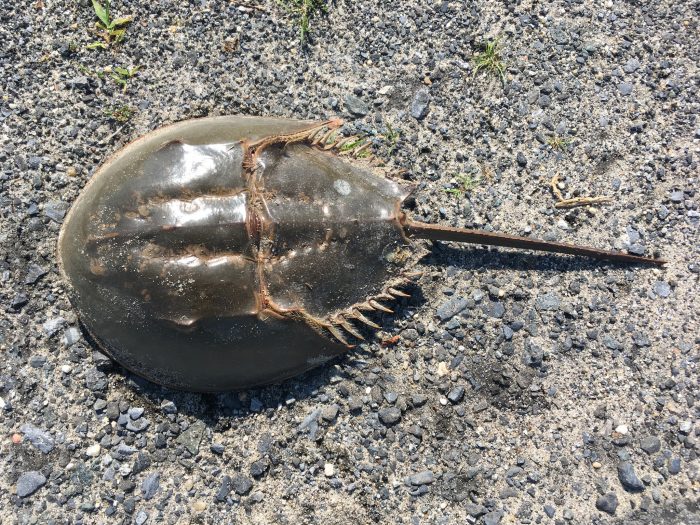Alternative bait could help protect horseshoe crabs
By Emily Mandracchia
In response to the alarming overharvesting and endangerment of horseshoe crabs on Long Island, conservationist John Turner of Seatuck is launching a groundbreaking fall project to create a lab-based, sustainable bait alternative — one he hopes will protect both marine life and local fishing livelihoods.
Horseshoe crabs are commonly used as bait for whelk, a carnivorous snail, and eel fishing; there are minimal measures currently in place to prevent over-harvesting. Long Island’s shore birds and migratory birds rely on horseshoe crab eggs for protein. Inhabiting as far north and south as Nova Scotia and Mexico, Horseshoe crab eggs are an essential food source for migrating shorebirds, fish and benthic (bottom-dwelling) species. Further, they are food sources for loggerhead sea turtles. Even sparrows feast upon their protein-rich eggs.
Turner said these “very significant crabs” linger on the sound’s floor, thereby increasing turbidity and stirring up a variety of food sources for other species.
The consequences of horseshoe crab endangerment is not limited to our island’s coastal populations; they are most valuable to humans for their blood proteins which are extremely sensitive to bacteria, making them an effective reagent.
The extracted compound, known as Limulus Amebocyte Lysate (LAL), acts as an indicator on screen-injected drugs and implanted biomedical devices for detecting gram-negative bacteria — Turner cites as a huge reason to thank these spider-legged creatures. Unfortunately, according to The Atlantic States Marine Fisheries Commission, the mortality rate of these crabs, once released back into the wild, can surpass 30%.
In terms of policy, Turner states that extremely small-scale measures may be decided by local jurisdiction. In the past, harvesting quotas have been instituted, reaching 150,000 crabs per year per location, as specified by the Department of Environmental Conservation.
But Turner says this is no solution, nor is it sustainable. 150,000 is a great number when considering how horseshoe crabs were exponentially more abundant in the past, especially because just one bird may rely upon hundreds out of a 4,000-egg nest to migrate — causing a ripple effect across the food chain. Humans are not exempt from the effects of wildlife endangerment.
Alongside the DEC, the Cornell Cooperative Extension and Stony Brook University, Turner’s project expected to launch this fall will craft lab-effective bait, which also must be cost and yield-dependent for fishers who participate in the trial.
Even still, stricter measures are necessary in keeping the horseshoe crab population abundant and thriving. Turner cited possible four five-day bans around new and full moons in May and June where harvesting is illegal so the crabs may spawn and disseminate uninterrupted, or total closings at certain locations. The DEC describes that sampling for taking population estimates would be conducted around these optimal moon phase and tide stage to indicate trends in horseshoe crab population.
Former closures have suggested that it takes between 8-10 years before changes in abundance of spawning-aged crabs are observed as a result of these management changes by the DEC, and an increase in adult horseshoe crab abundance is expected to begin in 2028.
State legislatures are still capable of vetoing these stricter conservation measures, as the DEC’s overall goal is to improve the stock status of horseshoe crabs in the New York region over time while still maintaining use of the species, specifically “ecosystem services, commercial harvest and observation and appreciation.”
Regardless, Turner remains cautiously optimistic as new, more serious regulatory policies for quotas or commercial banning still have a chance to be passed if conservation groups are persistent.







